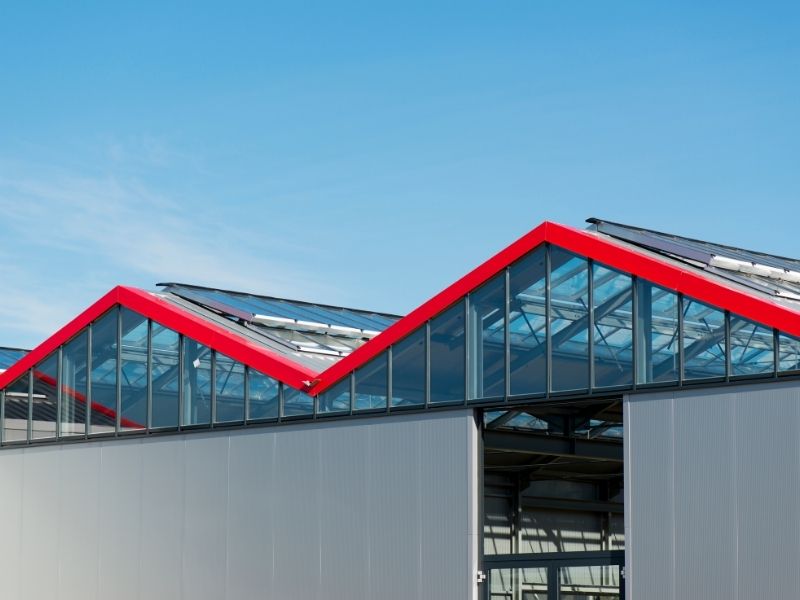When it comes to the construction of any building, durability and longevity are key and building materials play a key role. This holds true no matter what purpose the building serves, whether private or public, commercial or personal. Although the classics remain the finest choices, the fast increase in housing brings with it a boom in the use of lower-quality building materials.
In this post, we list our top five picks for building materials that stand the test of time. what’s more, they are both durable and reliable. which is everything an architect should look for when designing a building. If this is something of interest to you, we invite you to continue reading to learn what you need to know about the five strongest building materials for your projects.
Your Essential Guide to the 5 Strongest Building Materials for Your Projects

1. Steel
There are few building materials as sturdy as steel. When receiving the right care, steel lasts for a lifetime and beyond. It is in conventional use for industrial structures such as skyscrapers, but modern innovations broaden its scope.
Package steel buildings allow for large structures to be built directly to a business’s specifications. Moreover, you can install steel beams with concrete to reinforce an existing building. Of course, the flexibility of steel (metaphorically speaking) is its greatest strength.
2. Stone
In the category of natural building materials, stone is one of the toughest building materials available. It is difficult to move, due to its sheer weight, but it makes an excellent foundation. It’s stackable without the need for mortar and can withstand fire. There is no doubt that stone is decreasing in popularity in modern architecture, but that doesn’t detract from its quality.
3. Brick
A true classic, brick is usually made from clay and is in use throughout a myriad of ancient structures. Interestingly, once the clay dries into bricks it is exceptionally tough with a distinctly hard consistency. So, if it is good enough for the Great Wall of China, it’s good enough for modern construction.
Bricks are especially successful in drier climates, but once they receive a high heat treatment, a brick is capable of withstanding all types of weather. What’s more, bricklaying practices have not changed for decades, continuously providing the same great results.
4. Wood
I agree that wood is not nearly as tough or durable as the other materials on this list, but that doesn’t mean it’s without its strengths. In fact, its inherent pliable nature is precisely what makes it such a versatile, useful material. There is no denying the visual appeal of wooden structures, and it is comparatively lightweight.
It may not withstand the extreme weather conditions that other materials can, but it is still tough. Log cabins are a testament to the efficiency of wood as a building material. Though it may not serve as a primary construction material, it certainly holds its own in tandem with others.
5. Concrete
Last on our list, but by no means least — classic concrete. This material is made up of multiple materials, including stone, sand, cement, and water. Once dried, the result is an exceptionally tough foundation material. However, before drying, it can be molded into a variety of shapes which makes it easy to transport.
With the help of steel, you can also reinforce concrete to create even stronger structures. This is the winning combination that many of the world’s tallest skyscrapers are made from and with good reason! It can withstand almost all weather and is built to last for decades.
Choosing And Maintaining Building Materials
Choosing the best building material involves considering factors such as intended use, budget, durability, environmental impact, and aesthetic preferences.
Understanding material properties, evaluating costs, and assessing environmental sustainability is crucial. Local availability, compliance with building codes, and maintenance requirements should also be considered. Durability against weathering and pests, as well as aesthetic appeal, are essential.
Seeking advice from professionals and testing material samples can aid decision-making. The chosen material should meet functional requirements, withstand environmental challenges, align with regulatory standards, and contribute to the desired architectural vision. Careful consideration ensures an optimal balance between performance, longevity, and overall satisfaction with the completed project.
Maintaining building materials is essential for longevity, structural integrity, and aesthetic appeal. Regular cleaning removes dirt, dust, and debris with appropriate agents and methods. When pressure cleaning any surface, it’s essential to use the appropriate pressure setting and technique to avoid causing damage. Some materials, like wood or vinyl, may require lower pressure settings to prevent surface etching or other damage.
Inspections identify wear, damage, or deterioration for prompt repairs, preventing further issues. Sealants and waterproofing treatments protect against moisture infiltration in wood, concrete, and masonry. Proper drainage and ventilation control moisture levels, preventing mold and rot. UV-resistant coatings shield surfaces from sunlight-induced degradation. Trimming vegetation and pest control prevent damage.
Follow the manufacturer’s guidelines for specific maintenance. Establish a regular maintenance schedule for systematic upkeep, ensuring safety, functionality, and aesthetics while minimizing repair needs.
Durability is key.
With any building material, an architect’s primary concern should be its strength. No structure is successful if it collapses within a year, no matter how aesthetically beautiful it may be. Next time you consider a big design change, make sure to review your materials carefully!
If you have any questions or suggestions, we always love to hear from you in the comments below. Also below are links to more fantastic articles about ALL things DESIGN for your home or business.
Images Courtesy of Canva.
Other Posts You Might Enjoy:
6 Tips For A Successful Commercial Building Construction
7 Practical Tips for Building an Eco-Friendly Home
Building Owners Beware: 3 Vital Functions of Roofing Insulation
Top Challenges for Preservation of Cultural Heritage Buildings





